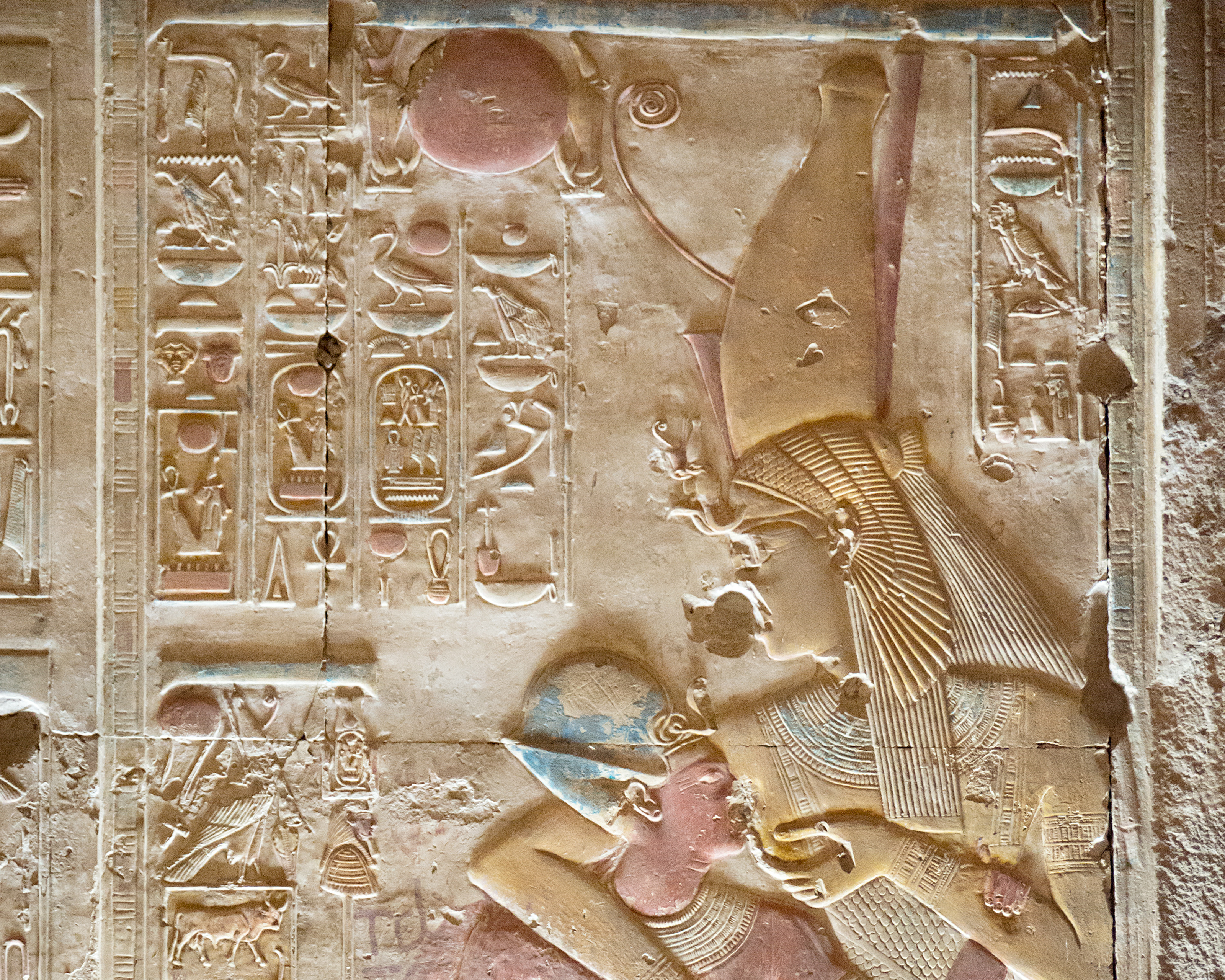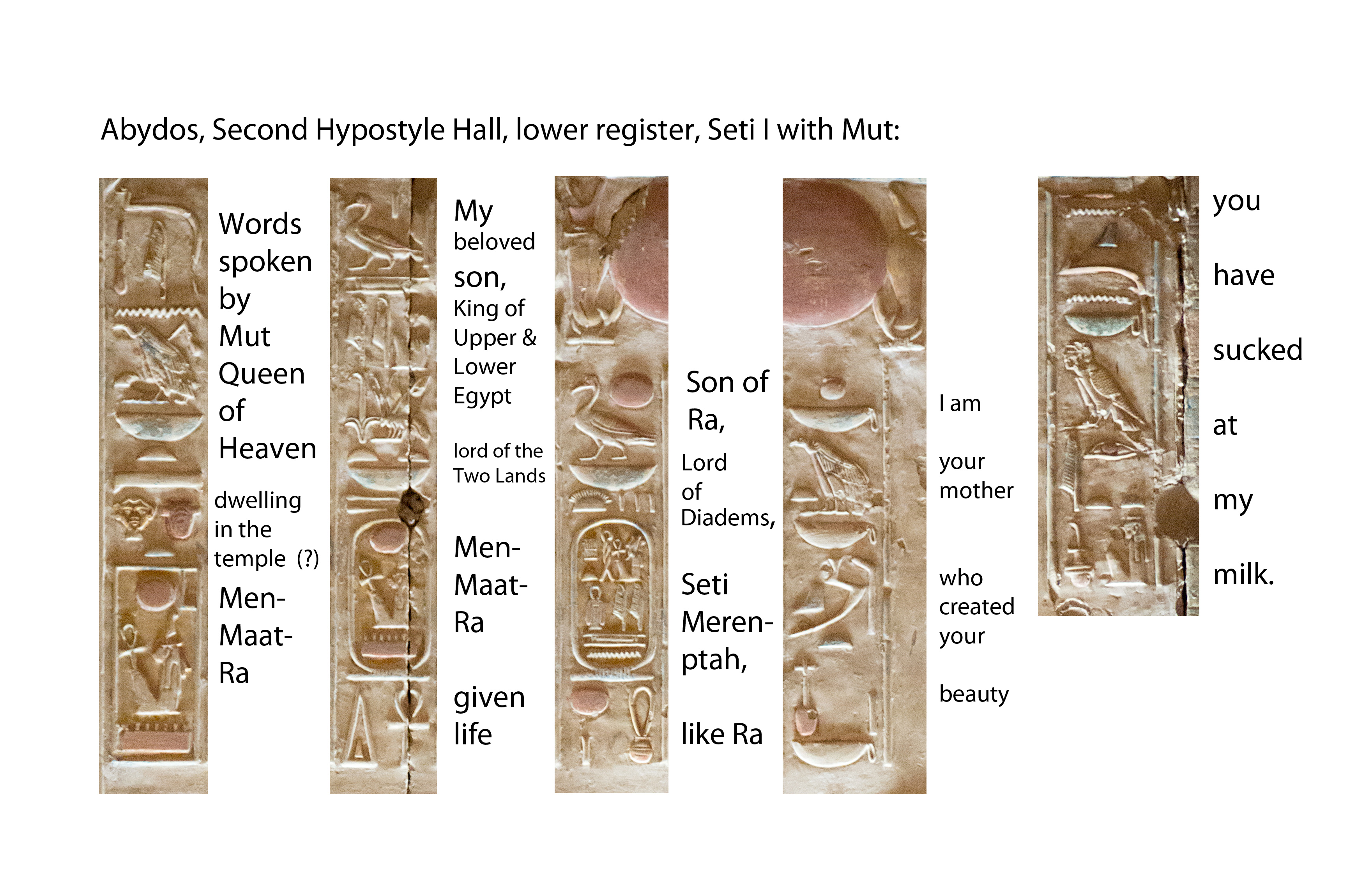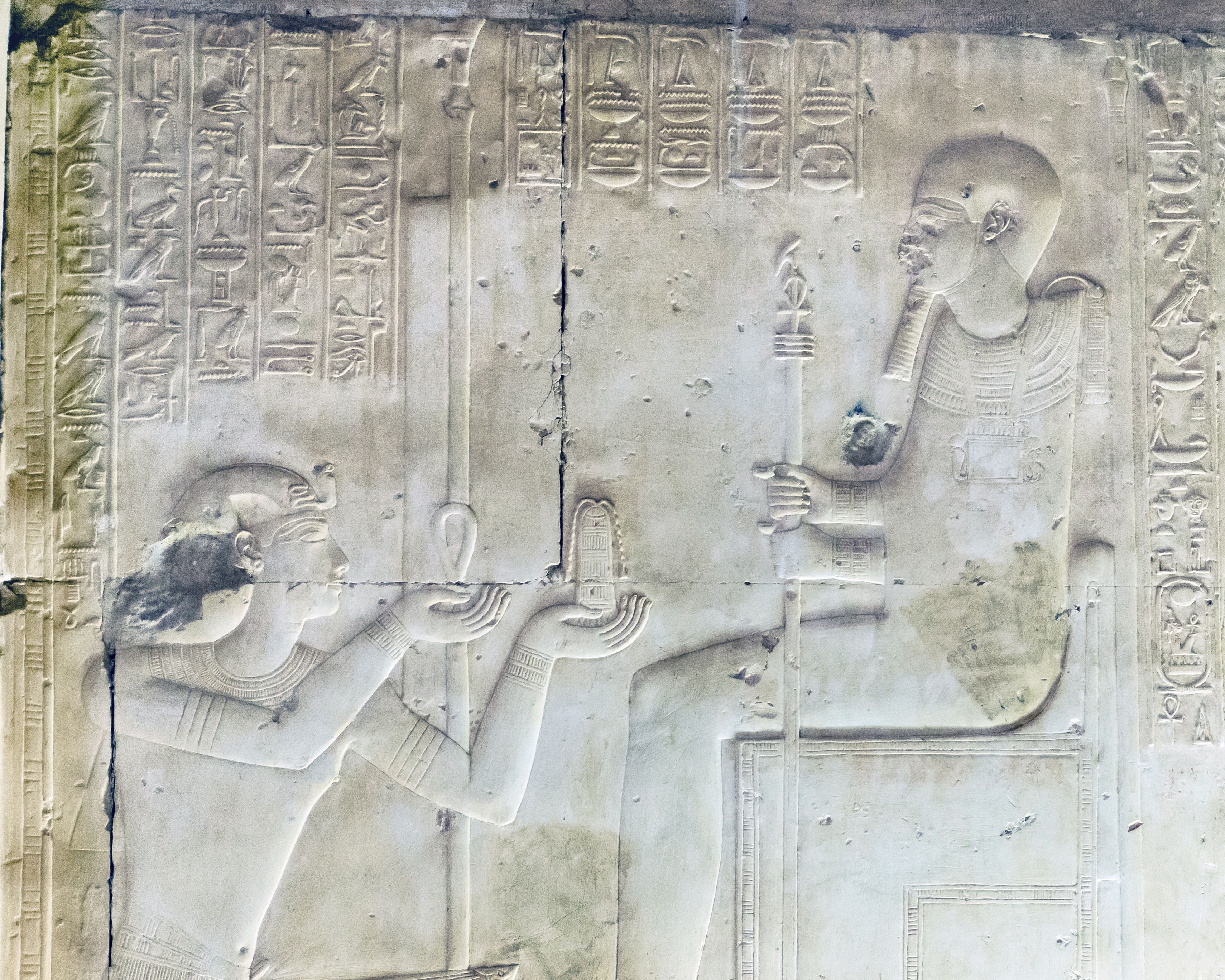
Friday, May 5, 2017
Matching up the Glyphs
9:43pm
It started with Lord of Strength and Power: Ancient Hymns for Wepwawet, by Chelsea Luellon Bolton. The author gave the source for one of the hymns. Scenes of King Herihor in the Court gives line drawings as well as the translations. I know enough about glyphs to be able to match them up:

Thanks to a colleague (Ionas), I've updated the Wepwawet hymn:
Wepwawet of Upper Egypt,
(The authors of the 1979 Epigraphic survey added a few things usually found in such inscriptions but not actually supported here by the hieroglyphs. For instance there must be a Djed glyph to say "all stability".
the Power of the Two Lands,
as He gives
all life and dominion,
all health,
all joy,
like Ra, forever.

From _Reading Egyptian Art_, Wilkinson
I may not be able to visit Seti I's Abydos temple in Egypt, but part of it came to me via Temple Ritual at Abydos, by Rosalie David. It has small line drawings of the scenes and some watercolor painting of a few scenes. I sought out nice large photos of the reliefs, so I could match up the translations with the hieroglyphs better.
Kairoinfo4u gives wonderful photos, all "creative commons" so we can print and enjoy. I made a crop of Seti I with Mut:

This crop focuses more on the hieroglyphs.
"My beloved son, King of Upper and Lower Egypt, lord of the Two Lands, MenMaatRa, given life, son of Ra, Lord of Diadems, Seti Merenptah, like Ra, I am your mother who created your beauty, you have sucked at my milk."
So I attempted a line-up:

Notice how Wepwawet's hymn and this relief both have "Like Ra":


Again, Kairuinfo4u has the original photo, from which the above is a a crop.
I was confused by what Seti is offering Ptah. I thought perhaps the item in Seti's left hand is a Menat counterpoise, because Ptah is often shown (as he is in this scene) with a distant counterpoise showing.
I recieved confirmation from an old book, The Temple of the Kings at Abydos: (Sety I.), by Algernon Thomas St. George Caulfeild, H. Laurence Christie, Sir William Matthew Flinders Petrie. One of those authors is describing one of the emblems seen in the temple, "Fig. 1 seems to be the menat or counterpoise of a collar".

I examined the image at full size and finally made out what Seti is offering with his right hand, a protective SA amulet:

Someday I will tackle the rest of those glyphs.